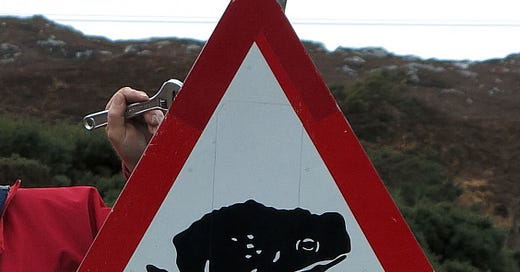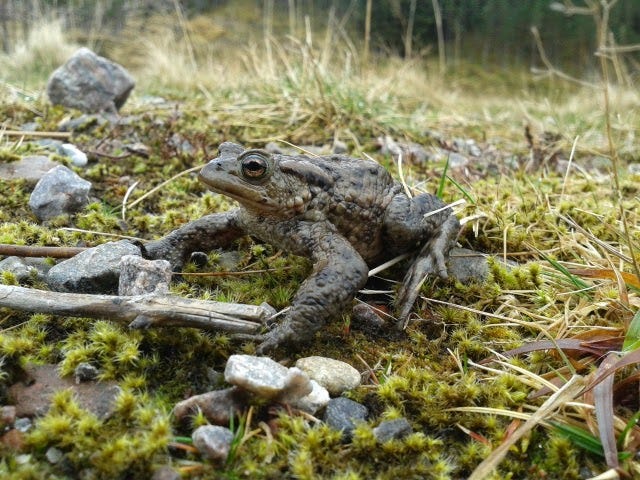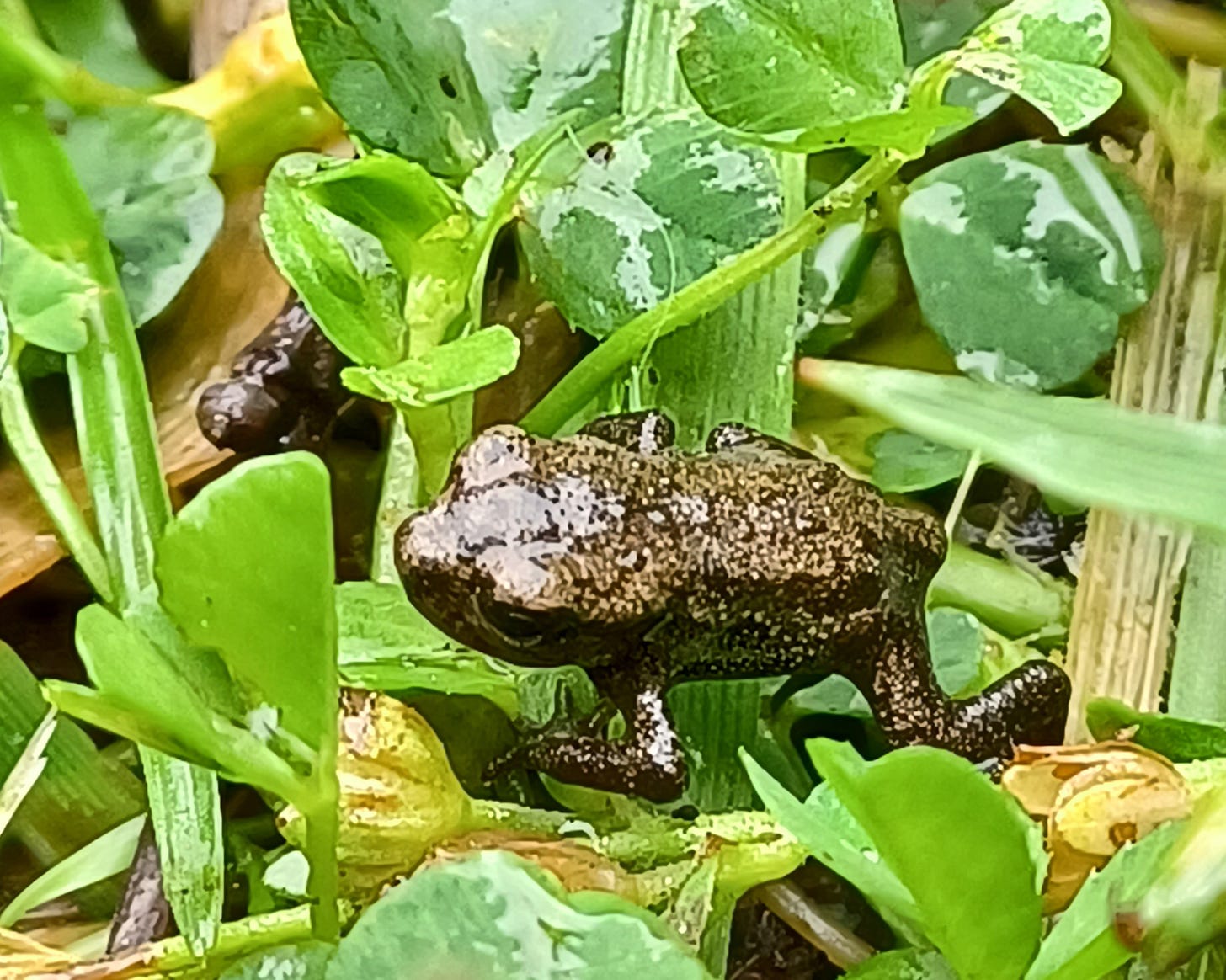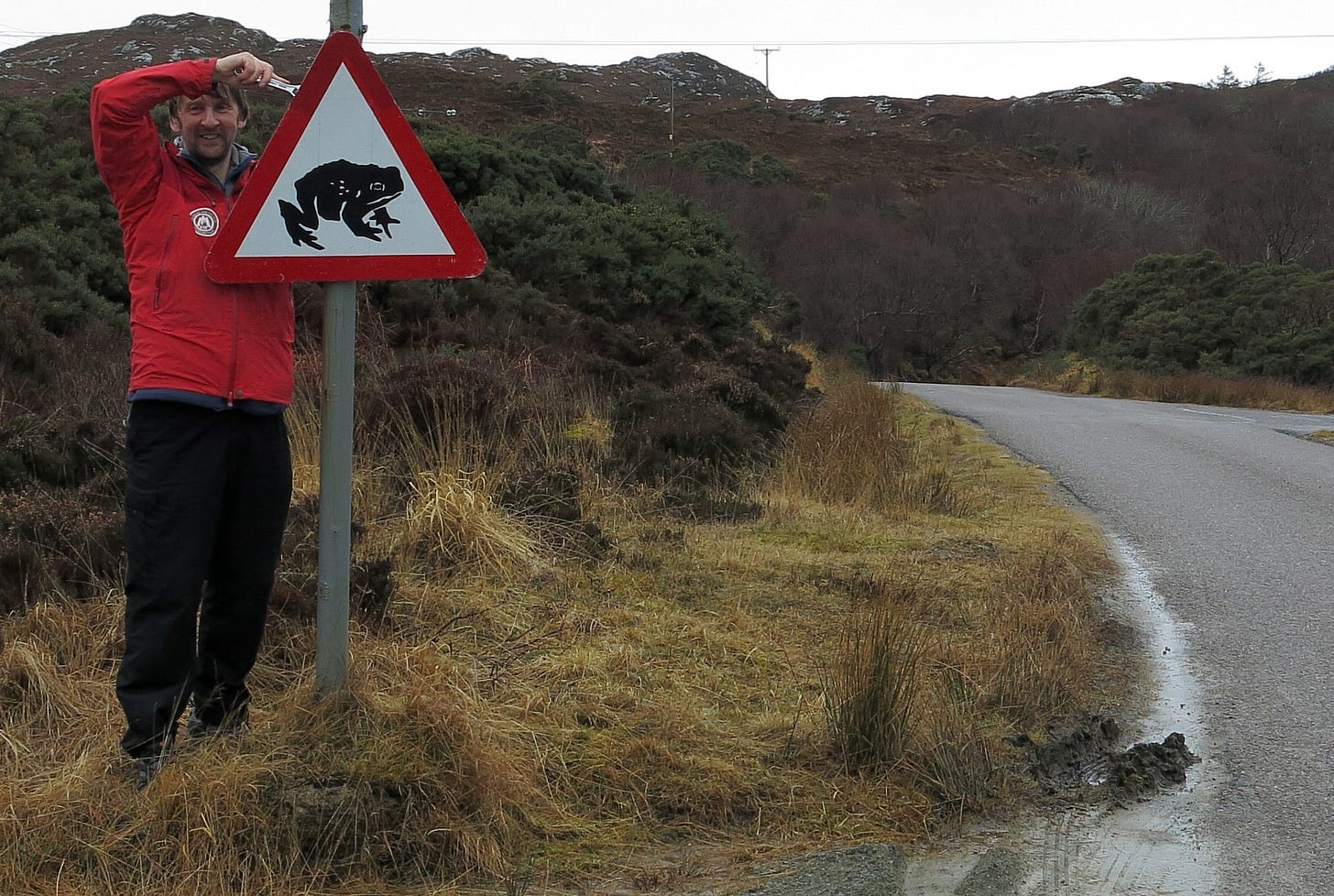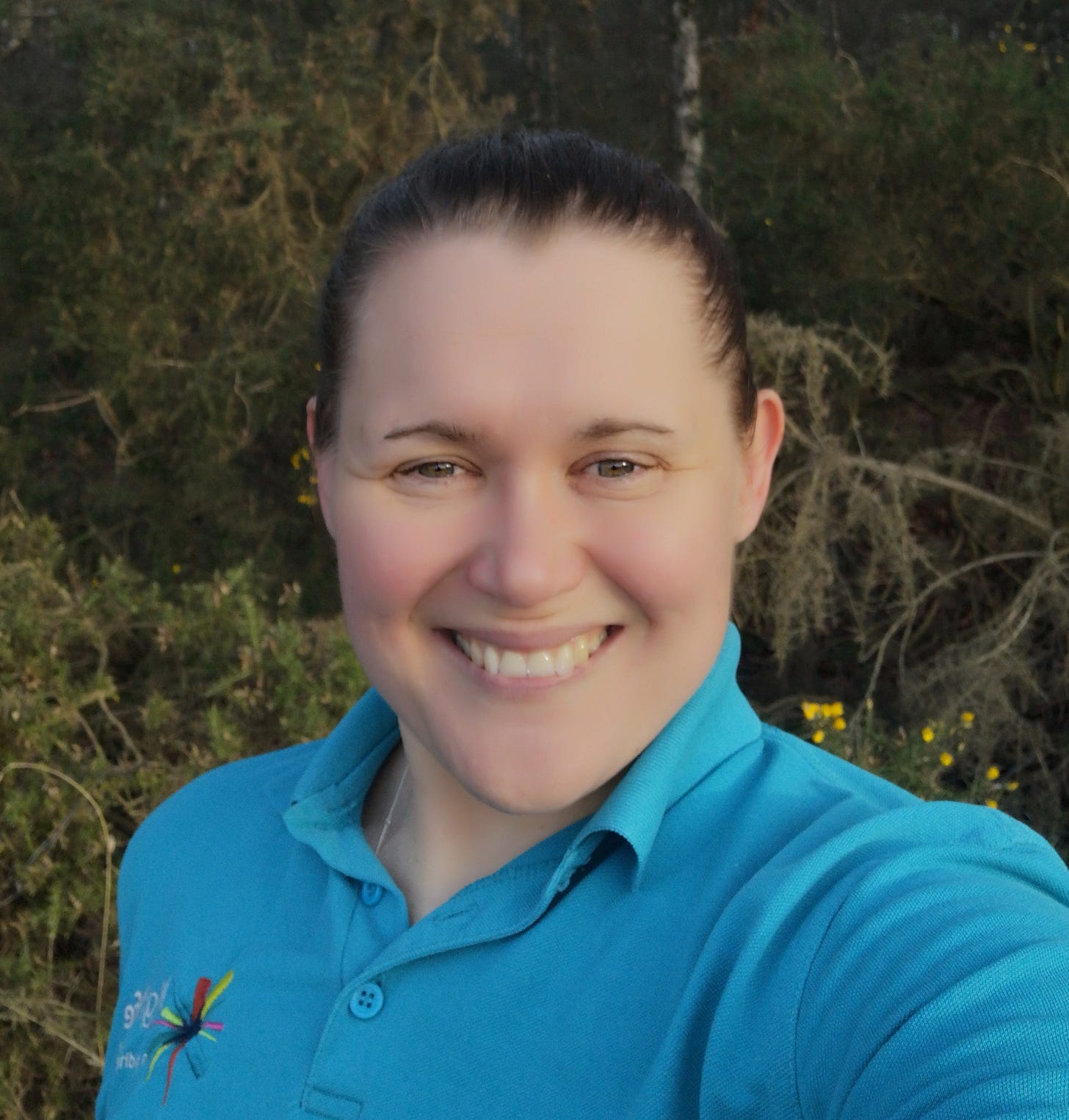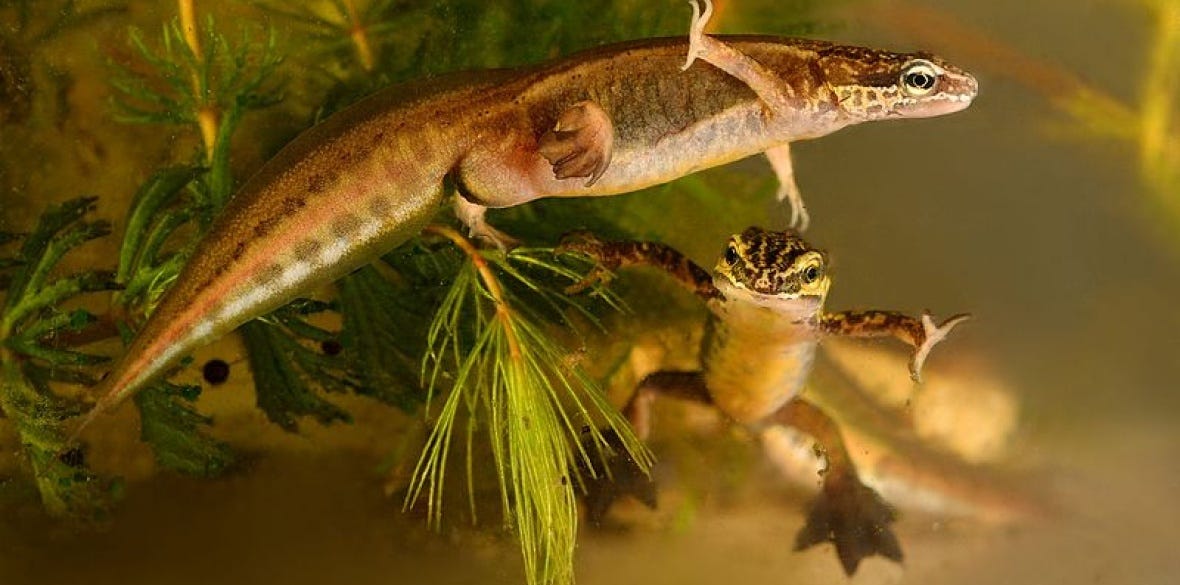A Long Journey for Little Legs
Marcia follows the migration of the toad from forest to pond and back again
You’re driving along a minor road, it’s March and spring showers are in full flow. You take your time carefully avoiding larger puddles and hidden potholes. Soon you catch a movement out of the corner of your eye, and then another, and another. Slowly you realise puddles aren’t the only obstacles to your progress. It’s toad breeding season and the wet weather is the perfect conditions for their travel towards suitable breeding ponds.
As your eyes adjust you see ten, twenty and then hundreds of tiny bodies on the road, males and females crossing a river of tarmac to continue the growth of their species. For you it’s just another Tuesday evening, for them it’s a mass migration to their breeding sites. To which they are very faithful, each toad makes an effort to return to the very pond from which it spawned.
This journey is filled with peril, if they’re fast, or lucky they will make it across the road without being crushed under a vehicle, or falling down a storm drain.
Those that make it will venture towards the middle of the pond, laying their eggs around branches and vegetation below the water. Here, unlike their frog counterparts, their eggs lie hidden from view. Often the only sign that breeding has been successful is the emergence of tiny versions of the adults towards the end of summer.
I think most of us will be familiar with the pain of avoiding adult toad migration in the Spring, but many of us forget about their very first migration. That of their emergence on mass from their natal pond, and their journey to a nearby forest or garden, where they will spend the majority of their lives feeding on slugs and other insects.
They make this first journey at only a few months old and at the size of a fingernail. Their tiny legs are required to take them back along a similar route to which their parents travelled at the beginning of the year. This is filled with the same perils, but literally on a much larger scale. It’s not just a car that can take out such a small creature, but a careless boot.
How do they survive such an epic journey? They do it by once again migrating on mass, with thousands of tiny toadlets leaving a pond at the same time, (toadlets will be emerging at the end of the summer from end July to end of August), the chances are some will make it to the wood on the other side. Some may be taken out by birds, the aforementioned boot, or die of dehydration on the dark desert of the road in the height of summer. But those that make it grow bigger and stronger over the next two years in order to make that journey again. Then it’s their young who must run the gauntlet of human obstacles.
Roads are a particular problem. They can be the size of a massive river to cross and on a dry day, can become a desert from which there is no escape. Placed between woodland or scrub, they bar a sacred route used for decades, and there is no way around. Add to that a fence and a once sacred route is cut off forever.
The good news is that they use the same routes every year and return to the same ponds, so us humans can easily prepare for this toad invasion and give them a helping hand by actively transporting them across these barriers. Many dedicated volunteers venture out every Spring to help with toad crossings, perhaps we could give the mini versions a helping hand too, with a trusty bucket.
To join or start a toad crossing visit the froglife website:
Marcia O'Hara is High Life Highland's dedicated Countryside Ranger for Easter Ross and South East Sutherland. She infuses her love for nature into every aspect of her work, from community clean-ups to guided events and workshops. With an academic foundation in Environmental Biology, Marcia excels in bringing fresh perspectives to her sessions, making science come alive in community learning. Known for her ability to engage and inspire, Marcia has a special interest in woodland botanics, including fungi, lichen, and trees. Her unique approach and deep connection to nature have made her an invaluable asset in preserving the natural beauty of the region she covers.
The Courtship Display of Newts
Newts, which belong to the family Salamandridae, are an integral component of the Scottish uplands ecosystem.
Join the PondNet Spawn Survey
As spring slowly unfolds across the country, bringing with it the renewal of life and the promise of warmer days, there's an exciting opportunity for nature enthusiasts and conservationists alike to make an impact. The Freshwater Habitats Trust is spearheading the PondNet Spawn Survey, a crucial initiative aimed at mapping the breeding sites of two of t…


